Infectious disease, biological and drug defenses
Word count: 2462
When a pathogen enters the body, the person becomes infected.
Pathogens are a kind of parasite that survives by the energy they use from the host body. In this case, some pathogens have the ability to produce a poison that, if released, can damage your body. Therefore what is a pathogen?
Pathogens include bacteria, viruses, proteases and fungi. The larger pathogens like worms, which include smooth worms and roundworms.
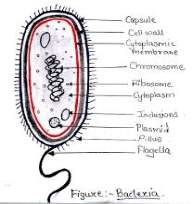
BACTERIA
There are four primary stages in bacterial infections:
- Connect to host cells using pili
- The structure of the peel can extend from the level of some bacteria. They are shorter than flagella. They are not movable and live in the bed close to bacteria; Pilli makes them from the protein.
- Duplicate
- Invasion of host tissue
- Destruction of host cells by toxin
(google.com.2018)
Salmonella typhi transmitted through food and indirect transmission through contaminated water, meat products. These bacteria produce toxins.
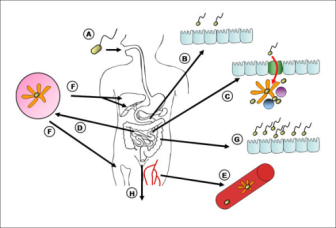 The diagrams show a bacteria structure and also possible sites of infection.
The diagrams show a bacteria structure and also possible sites of infection.
(Google.com.2018)
Thee most common type is campylobacter and also most common cause of food poisoning in the UK. Infection is commonly caused by chicken poultry consumption. Non-pasteurized milk is a common contamination to the birds’ feces.
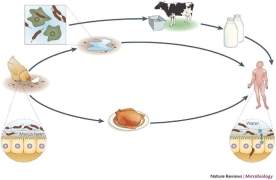
(Ka-perseus-images.s3.amazonaws.com, 2018)
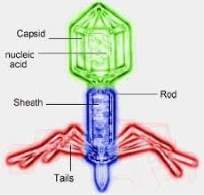
VIRUSES
Viruses simply do not cause these simple disease, but also aids to AIDS, Ebola, hepatitis and herpes. The diagram shows a bacteriophage a type of viruses. What causes these viruses to be so dangerous and the human immune system sometimes fights against it?
The virus consists of the following parts:
- Nucleic acid: single or double strands of DNA or RNA that contain viral vital information.
- Protein coverage: protects DNA or RNA
- Lipid membrane: protect the protein (it’s found in some specific viruses, such as influenza and they are called sheath viruses).
- These viruses simply release their content after entering the cell, but viruses that cannot easily pass through the membrane should be injected into the cell with their genetic material tricks. The target receptors on the host cell to gain entry into the cell. They also use enzyme to manipulate the hosts DNA to replicate the virus. The diagram below illustrates the life cycle of virus.
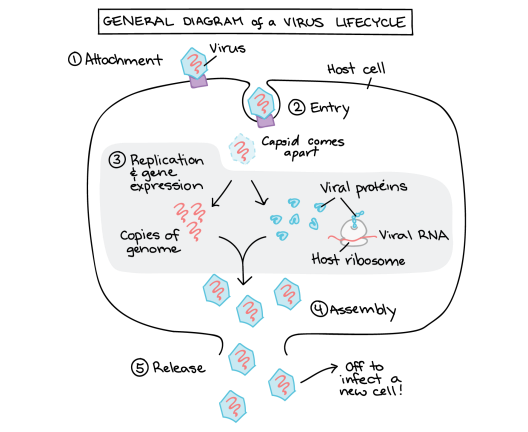
,
(Google.com.2018)
Rotavirus causes severe diarrhea in children and infants, and can be transmitted rapidly through contact with child and infant formulas.
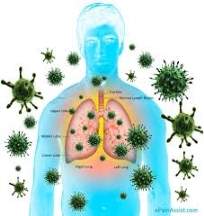
SARS, or acute respiratory syndrome is transmitted through respiratory droplets (see diagram) during coughing or sneezing, contaminated droplets infect the person with his or her eyes and nose, even by touching objects infected with sneezing and contacting the object or hand to the mouth.
These viruses can also be spread through contaminated objects, such as doorknobs, tabletops, and personal items. If you touch one of these objects and then touch your nose or eyes, you could develop a disease.
(Ka-perseus-images.s3.com, 2018)
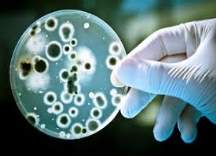 Fungi
Fungi
Pathogenic fungi are fungi that cause disease in humans or other organism. The majority are yeasts and cause infections such as (candida species) vaginitis/thrush, (tinea species) ringworm, (pneumocystis species) pneumonia (plate show growth of fungi). Fungi can infect any part of the human body including hair and nail.
- Tinea pedis The term used to describedermatophyte infection of the soles of the feet and the interdigital spaces.
- Candida albicans can cause infections that rang from superficial infections of the skin to life-threatening systemic infections.
Vectors are living creatures that cause infectious diseases and transmission to humans and animals, one of the most famous of which is mosquitoes. Other includes flies, ticks, triatomine Bugs, sandflies and some freshwater aquatic snails.
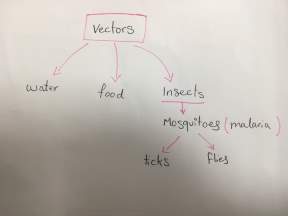
Round worms
Anterior mouths and longitudinal digestive tracts. They have a fluid-filled cavity within their body that makes the hydrostatic skeleton rigidity. The reason for the curves is to move them forward in the longitudinal direction. Adult worms form separate sexes with different reproductive systems.
|
Flat worms It has a flat and small body with abdominal and oral suckers; it also has a blind needle. They do not have a body cavity, Most species are hermaphroditic (individuals with female and male reproductive systems) however, some blood flukes form separate male and female adults. |

Some mosquitoes are vectors for disease. (The diagram opposite shows the life cycle of a mosquito). This means they can transmit disease from one human or animal to another one of them is Malaria parasites are present in both female Anophelesmosquitoes and human Anopheles mosquitoes. The genetic complexity and size can be so much that the introduction of an infection into the body enters thousands of antigens into the body.
The parasite has changed during these few lifetimes, even in the host of the human body, and at these different stages, presents various antigens that can cause mistakes, misdirect, and hiding in the immune system.
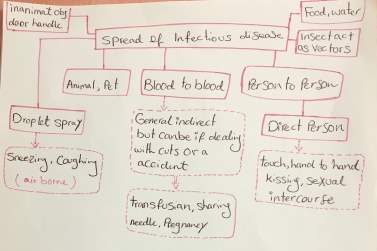 Vectors also include food and water borne disease such as typhoid, dysentery and chlorea (water), salmonella, E. coli (food).
Vectors also include food and water borne disease such as typhoid, dysentery and chlorea (water), salmonella, E. coli (food).
Diagram shows how disease can spread:
The diagram show how disease enter the body:
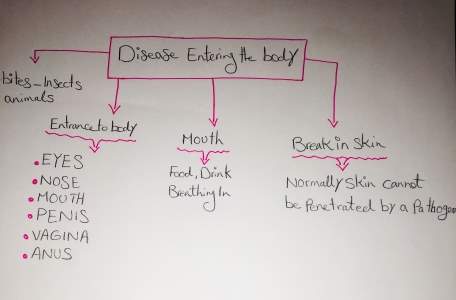
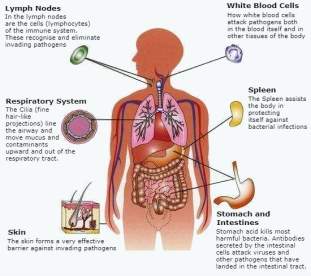 The human body has many mechanisms that indirectly protect the body. (The diagram shows the main nonspecific defences of the body). The main goal of this mechanism is the development of microorganisms to build the foundation and eliminate them through penetration into the deep tissues of the body.
The human body has many mechanisms that indirectly protect the body. (The diagram shows the main nonspecific defences of the body). The main goal of this mechanism is the development of microorganisms to build the foundation and eliminate them through penetration into the deep tissues of the body.
- The first part of the body is an outer skin that contains insecure cells such as cement and insulin keratin protein. This layer is thicker than water and infection, and in an unusual situation, it cannot usually penetrate through the pathogen.
- Other examples include the digestive tract, respiratory tract and mucous membranes. They are permeable and moist, but their fluids, including mucus and saliva, tear from the membrane of disinfectants, are released. Nasal hair implies particles in the respiratory tract. Also, the Cilia in the cells destroy the stimulus particles in the respiratory tract.
-
 Phagocytes (special white blood cells) that use the process called phagocytosis.
Phagocytes (special white blood cells) that use the process called phagocytosis.
Chemical defense
The chemical protection that the body produces also has glands in the body.
- The saliva and tears produced by the eye contain lysozyme enzymes through the cell wall of the positive and hot bacteria.
- The lactic acid of the vagina
- Sperm contains a substance that has antimicrobial properties that prevent the growth of bacteria in the male genitalia.
- Extremely caustic hydrochloric of the stomach
These are a nonspecific sign for any damage to tissues that show swelling, redness, heat and pain. The inflammation induced the body’s immune system to go to the damaged site to recover and remove microorganisms.
Cytokines caused by nerve stimulation and chemicals cause inflammation to be controlled.
Loss of fluid causes swelling called edema.
In some types of inflammation phagocytes are stored in bacteria and white masses in the form of pellets.
Fever is an undeniable mechanism of defense because it may exist on both sides. Therefore, using a suspended substance, the name of the pyrogenic can be affected by mucosal hypothalamus. However, it can be too dangerous and, on the contrary, it can be positive, because it reduces the growth of heat-sensitive microorganisms.
Hygiene
It is important we protect ourselves from infection where possible, as our bodies can do not everything by itself.
Good hygiene is essential in protecting yourself from infection.
It is essential to maintain health and cleanliness, as well as to prevent infection, skin problems. It is essential to maintain health and cleanliness, as well as to prevent infection, skin problems. To keep clean, should make sure:
There is also preventative equipment can help against infection such as:
- Wash hands after every time you go to the toilet
- Bathing at least twice a week
- Brushing twice a day
Also equipment that prevent the transmission of disease include:
- Clothing – masks and gloves
- First aid kits
- Destroying insects
Hygiene and cleaning the house are likely to reduce microbial growth. Health care should be part of life and be targeted on a regular basis. Some of the things that you need to do in general cleaning the house to prevent bacteria include:
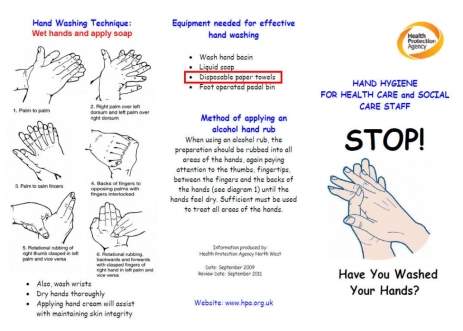 Cleaning toilet, showers/bath regularly. Food hygiene is essential for personal safety of yourself and others. Also include personal protective equipment used in hospital i.e. (PPE), masks, gloves, goggles, and gowns.
Cleaning toilet, showers/bath regularly. Food hygiene is essential for personal safety of yourself and others. Also include personal protective equipment used in hospital i.e. (PPE), masks, gloves, goggles, and gowns.
(Ka-perseus-images.s3.amazonaws.com, 2018)
 Immunity antibody is two different parts: humoral immunity and cell-mediated immunity.
Immunity antibody is two different parts: humoral immunity and cell-mediated immunity.
Humoral immunity is a special type of proprietary defense (adaptive immune system) that acts independently as specific microscopic molecules. This type of immune system is named because of its nature, which is carried out through body fluid, humoral immunity, or body fluid immunity. This system, which id found in most vertebrates, consists of molecular and cellular components that play a role in the immune process and more specifically deal with the dangers.
Lymphocytes B, when they first bind to an antigen, grow, divide, and change into plasmocytes and B cells of memory. Plasmocytes secrete proteins called antibodies that are soluble in blood. Body protection against viruses, bacterial toxins and bacteria that spontaneously circulate in the fluid to be transmitted to the cell. It also causes specific reactions to transplanted tissues.
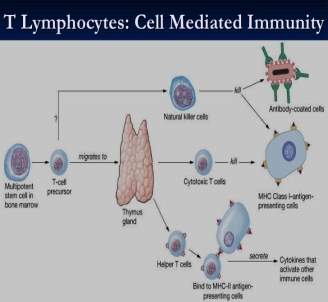
Cell mediated immunity:
Different parts of the lymphocyte, called T, identify antigens that are outside the cell surface, tissues, and organisms.
T cells regulate the function and proliferation of other cells in the immune system like (Helper T cells, cytotoxic T cells).
B cells including: neutrophils, macrophages.
Defense against:
- The virus and bacteria that exist inside the host cell and do not have access to antibodies.
- Cancer cells
- Protozoa, Fungi, and helminths
- Transplanted tissue
(Google.com, 2018)
Antigen: often they are large polysaccharides or protein from a foreign organism.
- Microbes: cell walls, capsules, toxine, flagella virales capsides, etc.
- No microbial: egg white, pollen, red blood cell surface molecules, serum proteins, and surface molecules from transplanted tissue.
Nucleic acids and Lipids are only antigenic when combined with proteins or
Polysaccharides.
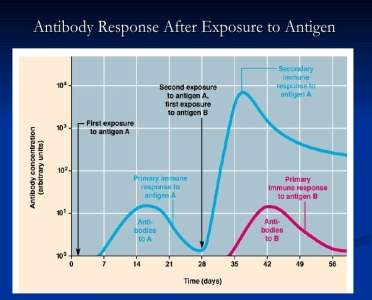
Antibodies:
- Proteins that recognize and attach to the very high antigen properties.
- Response to exposure to the antigen.
- A germ or virus can have several antibiotic sites that may be attach to different antibodies.
- Each antibody has at least two similar sites: antigen-related site
- The Value of an Antibody: The number of antigen-linked sites that are most commonly bivalent.
- Dependent on a group of serum proteins called immunoglobulin.
Immunological memory:
Antibody: the amount of antibody in the serum
Form f antibody levels during infection
Main response
- After being exposed to the first antigen, no antibody can be found in serum after a few days.
- A regular increase in titer, first of lgM and then of lgG is observed.
- Most B cells are converted to plasma cells, but some B cells live in long-term memory cells.
- Gradual decrease of antibodies follows:
Secondary response
- Depending on the antigen, it shows a faster and more severe reaction than antibody.
- Increasing the response to antibodies is due to the presence of memory cells that rapidly stimulate plasma cells.
Antibiotics only work against bacteria. The antibiotics can kill bacteria by either altering their cell walls or the bacterial DNA or the bacterial ribosome.
For example, the cell wall does not exist in human cells, antibiotic penicillin works by maintaining a bacterium in the cell wall. Human cells and bacteria are also different from the ones that are used to make proteins or DNA. Some antibiotics repel the bacterial membrane.
Antiviral drugs are class of medications that are specifically used to treat infectious viruses. Unlike many antibiotics, anti-viral drugs do not destroy their target. But to curb their growth. The main task of dealing with them is the body’s defense system, and its success and failure determine the strength of this defense system.
When the viruses enter, the human body is defending itself and in most cases it can defeat them. Drugs for the treatment of viral diseases do not eliminate viruses, compared to the effects of antibiotics in bacteria, but they are growing and giving them the opportunity to defeat the virus.
Antifungal The effectiveness of drugs together, destroying fungal cells – for example, removes the contents of fungal cells and cells from the cell’s wall, preventing the growth and proliferation of fungal cells.
Anthelmintic Most medications used to treat worm infections cause starving, paralyzing and worms. For example, mandendazole, albendazole and tibundazole work by preventing the absorption of carbohydrates by sugars necessary to survive. They can only kill worms, not eggs.
Antimicrobial resistance To treat the infection, it can be used to resist microorganisms (including fungi, bacteria, parasites and viruses).
When microorganisms are resistant to antibacterial, antifungal, and antiviral drugs, other standard drugs do not work, and the infection remains in the body and can be easily transmitted. Antibiotic resistance factors: self-medication, abuse, and antibiotic use.
The main function of plasmids is the transfer of antibiotic-resistant genes and they carry other plasmids that are active in metabolic activities and are useful for digestion and elimination of environmental contamination. They also have the ability to produce antibacterial proteins. Plasmids are also capable of carrying genes that increase the pathogenesis of bacteria causing diseases such as semen and chest.
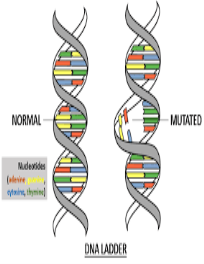
Mutations can occur once in a person’s lifetime, and only in certain cells, not in each cell of the body. The reason for these changes can be caused by environmental factors such as UV, or it can happen when the DNA copies itself as a bug during cell division. When a protein mutation plays a vital role in the body, it can disrupt normal growth or create a medical condition. … It is important to note that the genes themselves do not cause genetic disorders of the disease, but they are caused by mutations caused by inappropriate gene activity.
(Google.com, 2018)
Reference:
- Beuchat, L.R., 1996. Pathogenic microorganisms associated with fresh produce. Journal of food protection, 59(2), pp.204-216.
- Morawska, L., 2006. Abstract. Indoors air, 16(5), pp.335-347.
- Borgers, M., Degreef, H. and Cauwenbergh, G., 2005. Fungal infections of the skin: infection process and antimycotic therapy. Current drug targets, 6(8), pp.849-862.
- Dye, C., 1992. The analysis of parasite transmission by bloodsucking insects. Annual review of entomology, 37(1), pp.1-19.
- Delost, M.D., 2014. Introduction to Diagnostic Microbiology for the Laboratory Sciences. Jones & Bartlett Publishers.
- Kuper, C.F., Ruehl-Fehlert, C., Elmore, S.A. and Parker, G.A., 2013. Immune system. In Haschek and Rousseaux’s Handbook of Toxicologic Pathology (Third Edition) (pp. 1795-1862).
- Live, E.T., Stream, P.L. and Live, R.T., Ingera is the secret weapon against iron deficiency, anemia, cancer & depression.
- Galazka, A.M., Milstien, J.B., Robertson, S.E. and Cutts, F.T., 1993. The immunological basis for immunization.
- Rao, A.S., 1997. Introduction to microbiology. PHI Learning Pvt. Ltd.
Cite This Work
To export a reference to this article please select a referencing style below:

